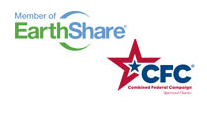Environmental Project-Based Learning
What is E-PBL?
Environmental project-based learning (E-PBL) offers opportunities for students to actively explore and address environmental challenges while building skills in teamwork and communication, research, data collection and analysis, community engagement, and reflection. E-PBL enables and requires students to delve deeply into their academic content while investigating issues in their own backyard.
Learn more about project-based learning in this short video, Project-Based Learning: Explained, produced by the Buck Institute for Education.
Why E-PBL?
PBL has been shown to help students develop critical skills while delving deeply into their academic content. The reports and research summaries linked here include the latest research on the benefits of project-based learning.
Tools & Resources
Engaging students in E-PBL requires a shift in the way lessons are prepared and presented for many educators. These tools and resources offer teachers an introduction to project-based learning strategies.
Featured Resource: PBL-U
- Project-Based Learning Model: Relevant Learning for the 21st Century
- Project-Based Learning: A Resource for Instructors and Program Coordinators
- PBL Do-It-Yourself: Guidance, Tools and Tips for Your Projects
- Classroom Guide: Top Ten Tips for Assessing Project-Based Learning
Project Profiles
The projects highlighted here offer examples of E-PBL in action and feature the core elements of E-PBL: real-world problem-solving, local environmental issues, multidisciplinary learning, leadership skills, community engagement, and academic rigor.
- Jamaica Bay Wildlife Refuge Trail Guide and Calendar
Grade-level: High School
Subject area(s): Language Arts, Science, Technology, Visual Arts
- Wetland Watchers: Kids Care for Their Environment
Grade-level: Middle School
Subject area(s): Science
Grade-level: Elementary School
Subject area(s): Science, Social Studies
- Taking Class Outdoors with Environmental Education
Grade-level: High School
Subject area(s): Science, Language Arts, Social Studies



